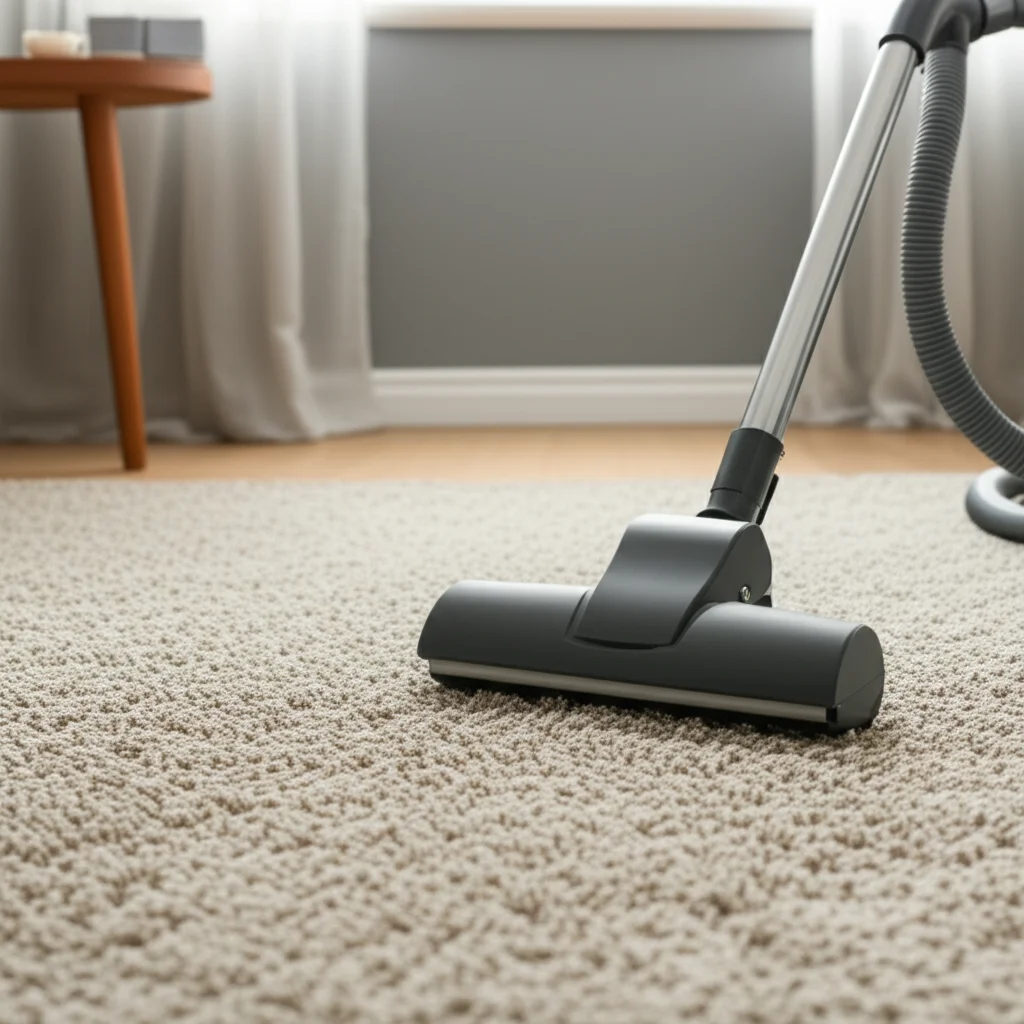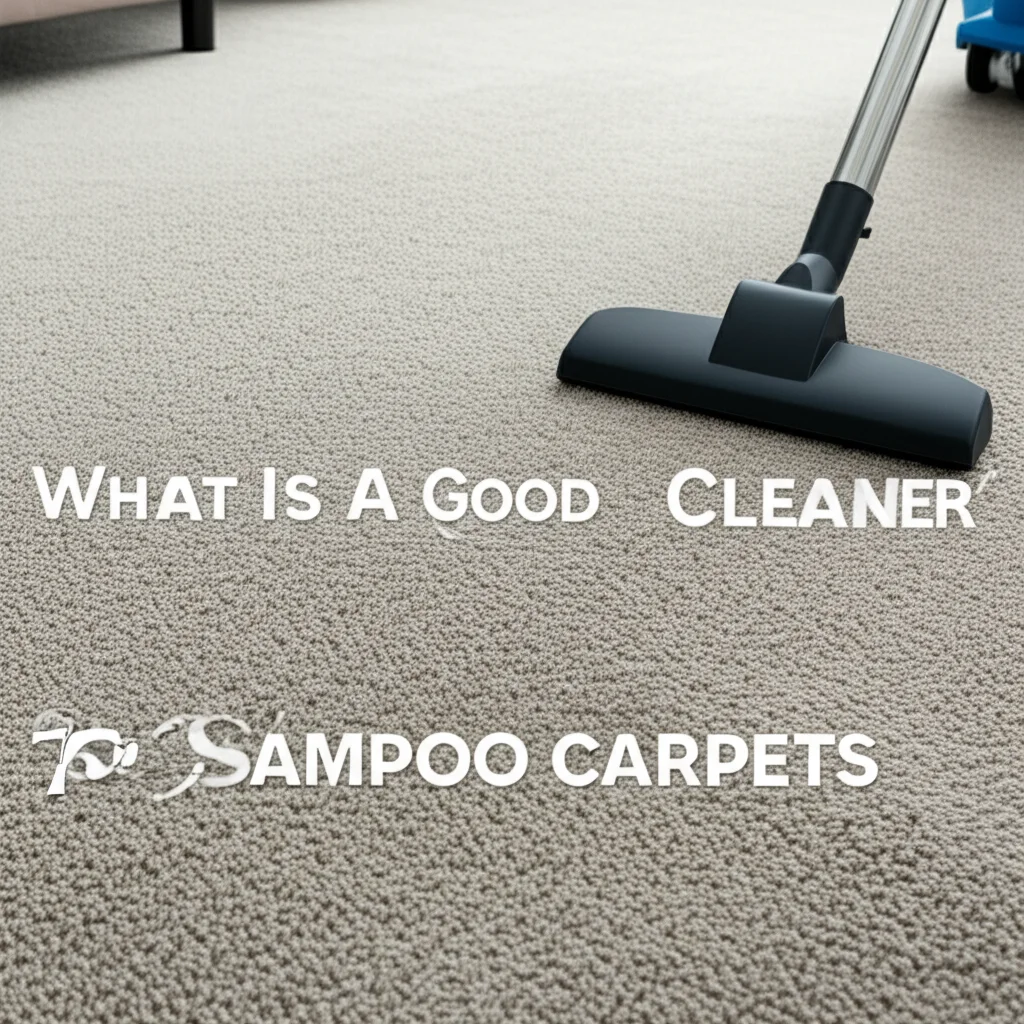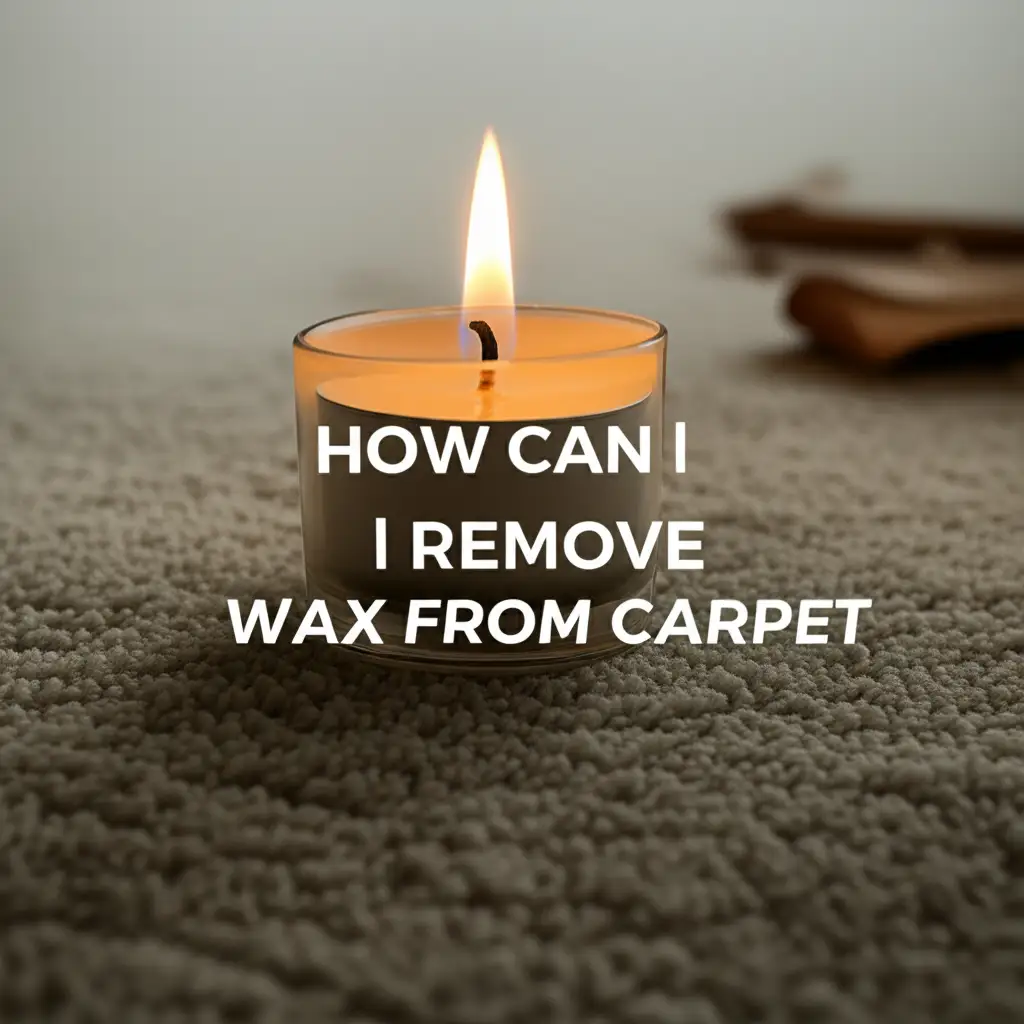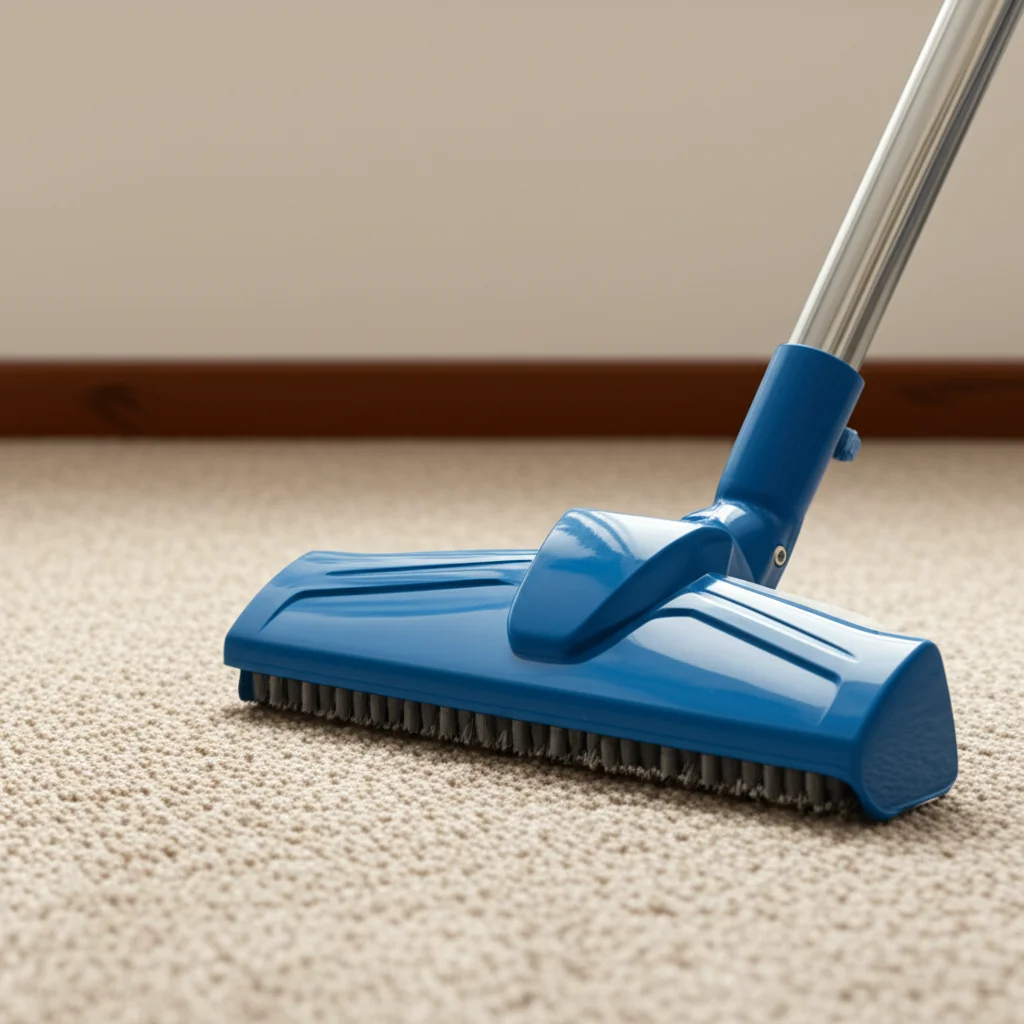· Todd Martin · Home Cleaning · 18 min read
How To Clean Old Stains From Carpet

Revive Your Carpet: How to Clean Old Stains Effectively
Has an old, stubborn stain on your carpet been staring back at you? Perhaps it is a memory from a forgotten spill or a lingering mark from a past pet accident. Cleaning old stains from carpet seems like a difficult chore. Many people believe these marks are permanent.
I understand the frustration. A clean carpet makes a home feel fresh. Old stains, however, make your space look dull and dirty. But do not lose hope. Removing these set-in marks is possible.
This article offers practical, step-by-step guidance. We will explore various methods to clean old stains from carpet. You will learn about common home remedies and specific solutions for different stain types. We also discuss essential tools and offer tips for prevention. By the end, your carpet can look new again.
Takeaway
- Identify the stain type: Knowing what caused the stain helps choose the right cleaning method.
- Test cleaning solutions first: Always apply any cleaner to an inconspicuous area of the carpet before full use.
- Blot, do not rub: Rubbing can spread the stain and damage carpet fibers. Always blot from the outside in.
- Use common household items: Vinegar, baking soda, and dish soap are often effective.
- Consider professional help for severe stains: Some stains require specialized equipment or expertise.
How do you clean old stains from carpet?
To clean old stains from carpet, first identify the stain type and test a chosen cleaning solution on an hidden area. Use a mixture of white vinegar, warm water, and dish soap, or a paste of baking soda and water. Apply the solution, let it sit, then blot it thoroughly with a clean cloth, rinsing and repeating as needed.
Understanding Old Stains and Carpet Types
Tackling an old stain begins with understanding its nature. Stains change as they age. They dry out and bind more strongly to carpet fibers. This makes them harder to remove than fresh spills. The type of stain matters greatly. A grease stain needs a different approach than a coffee stain.
Your carpet’s material also plays a role. Natural fibers, like wool, react differently than synthetic ones, such as nylon or polyester. Wool can shrink or yellow with harsh chemicals. Synthetics are generally more durable. Always know your carpet’s fiber content before you start cleaning. This prevents accidental damage.
The Science Behind Set-In Stains
When a liquid spills, it seeps into the carpet fibers. Over time, the liquid evaporates, but the solid particles remain. These particles become embedded in the fibers. The stain effectively dries onto the carpet. This creates a strong bond.
Heat or previous attempts to clean can also set a stain. If you used hot water on a protein-based stain, like blood, it could have cooked the protein. This makes the stain even more difficult to lift. Understanding this helps you approach the problem correctly. Knowing the stain’s history helps you choose the best cleaning solution. Keeping your carpet clean regularly can prevent many old stains from forming. Learn more about how to keep carpet clean.
Identifying Your Carpet Fiber
Before applying any cleaning solution, identify your carpet’s material. Different fibers react differently to cleaning agents. You can often find this information on a tag under a corner of the carpet. You can also check your home’s original documents.
If you cannot find the fiber type, perform a discreet test. Pick a small, hidden spot, like inside a closet or under a piece of furniture. Apply a tiny amount of your chosen cleaning solution. Wait a few minutes to observe any adverse reactions. Look for discoloration, shrinkage, or fiber damage. This simple test saves you from making a bigger problem.
Essential Tools and Solutions for Stain Removal
Preparing your cleaning arsenal is the first step. You need more than just a spray bottle and a rag. Having the right tools makes the job easier. It also increases your chances of success. A clean, fresh carpet is the goal.
Simple household items often work wonders. You do not always need expensive commercial cleaners. Many effective solutions are already in your pantry. However, some specialized tools can be very helpful for deep-seated stains.
Basic Cleaning Supplies You Will Need
Gather these items before you begin. They are the core of any successful stain removal effort. Having them ready saves time and frustration. A good cleaning cloth is key for blotting.
- Clean White Cloths or Paper Towels: Avoid colored cloths as their dyes can transfer to your carpet. White is best for absorbing stains.
- Spray Bottle: For applying liquid solutions evenly.
- Soft Bristle Brush: For gently working solutions into the stain.
- Vacuum Cleaner: To remove loose dirt and debris before and after cleaning.
- Bucket or Bowl: For mixing solutions.
- Gloves: To protect your hands from cleaning agents.
Common Household Cleaning Solutions
These solutions are effective, safe, and usually readily available. They form the basis of many DIY carpet cleaning methods. I use these often for everyday spills. You can tackle many small stains just by how to spot clean carpet.
- White Vinegar: An acidic solution that helps break down many organic stains and odors. It is a natural disinfectant.
- Baking Soda: A mild abrasive and odor absorber. It works well on grease and liquid spills.
- Dish Soap (clear, mild): Cuts through grease and oil. Choose one without dyes or strong perfumes.
- Hydrogen Peroxide (3% solution): Good for blood stains and some organic stains. Always test it first, as it can bleach some carpets.
- Rubbing Alcohol: Effective for ink, nail polish, and some dye stains.
- Cornstarch or Talcum Powder: Excellent for absorbing fresh grease spills.
Specialized Cleaning Products and Tools
For particularly tough or old stains, you might need more specialized items. These can provide extra power. They can reach deep into the carpet fibers.
- Enzymatic Cleaners: These are crucial for pet stains. Enzymes break down organic matter like urine, vomit, or feces. They also eliminate odors.
- Commercial Carpet Stain Removers: Follow product instructions carefully. Look for products designed for old stains.
- Carpet Cleaner Machine (rented or owned): A steam cleaner or carpet shampooer can provide a deep clean. It helps extract solutions and loosened dirt. Consider one for overall refresh. You can learn more about how to clean a carpet shampooer to ensure it works well.
- Wet/Dry Vacuum: Useful for extracting liquids and lifting moisture.
Always remember to ventilate the area well when using any chemical cleaners. Safety first is important.
Common Home Remedies for Old Carpet Stains
Home remedies offer a simple, cost-effective way to fight old carpet stains. These solutions use ingredients found in most homes. They are often less harsh than commercial cleaners. I find them surprisingly effective for many common issues.
Before you start, remember the golden rule: blot, do not rub. Rubbing spreads the stain and damages carpet fibers. Always work from the outside edge of the stain inward. This contains the stain.
The Vinegar and Baking Soda Power Duo
This combination is a classic for a reason. It tackles many general old stains. The baking soda absorbs and deodorizes. The vinegar cleans and helps lift the stain. This method is safe for most carpet types.
- Preparation: Vacuum the area thoroughly. Remove any loose debris from the stain.
- Apply Baking Soda: Sprinkle a generous layer of baking soda over the entire old stain. Let it sit for at least 30 minutes, or even overnight for very old stains. Baking soda absorbs odors and some moisture.
- Mix Vinegar Solution: In a spray bottle, combine equal parts white vinegar and warm water. Add a few drops of mild dish soap. Do not use too much soap. Excess soap leaves a sticky residue.
- Spray and React: Lightly spray the vinegar solution over the baking soda. You will see a fizzing reaction. This reaction helps lift the stain from the fibers.
- Let it Sit: Allow the mixture to sit for a few hours. For very stubborn stains, let it dry completely.
- Brush and Vacuum: Once dry, gently brush the dried residue with a soft brush. Then, vacuum up all the baking soda and stain particles.
- Repeat if Needed: For deep-set stains, you might need to repeat this process a few times.
Dish Soap and Warm Water Method
This simple solution is surprisingly effective on many water-soluble stains, including food and drink spills. It cuts through grease and grime. It is a gentle approach.
- Mix Solution: In a bowl, mix one tablespoon of clear dish soap with two cups of warm water. Stir gently to create a sudsy solution.
- Apply and Blot: Dip a clean white cloth into the sudsy water. Wring it out well so it is damp, not soaking wet.
- Dab the Stain: Gently dab the stain with the damp cloth. Work from the outside of the stain inwards. Do not rub.
- Rinse: After blotting the stain, dampen another clean cloth with plain warm water. Use this to blot the area and rinse out the soap residue. Soap residue attracts dirt.
- Dry: Place a stack of clean paper towels or a thick cloth over the damp area. Weigh it down with a heavy object. This absorbs remaining moisture. Leave it overnight if possible.
- Vacuum: Once dry, vacuum the area to restore the carpet pile.
Hydrogen Peroxide for Bleachable Stains
Hydrogen peroxide (3% solution) is excellent for organic stains. This includes blood, wine, or food dyes. It has a mild bleaching action. This means you must test it first on an inconspicuous area. It works by oxidizing the stain.
- Test First: Apply a tiny drop of 3% hydrogen peroxide to a hidden spot on your carpet. Wait 10-15 minutes. Check for any color change or damage. If the color fades, do not use it.
- Apply Carefully: If safe, dampen a clean white cloth with hydrogen peroxide.
- Blot the Stain: Gently blot the old stain. Do not saturate the carpet. The peroxide will bubble as it reacts with the stain.
- Let it Work: Allow the peroxide to sit for 5-10 minutes.
- Rinse: Dampen another clean cloth with plain water. Blot the area to rinse out the peroxide.
- Dry: Blot dry with clean towels. You can also speed drying with a fan.
Remember, consistency is key when cleaning old stains. You might need multiple applications for the best results.
Tackling Specific Stubborn Old Stains
Some old stains require targeted approaches. Generic solutions might not be enough. Pet accidents, coffee spills, and grease marks are common culprits. Each needs a specific chemical reaction to break its bond with carpet fibers.
I have faced many of these myself. It often feels impossible at first. But with the right knowledge, you can make a big difference. Never give up on these tough stains.
Removing Old Pet Stains and Odors
Pet stains are notoriously difficult. They often come with lingering odors. Urine, especially, soaks deep into the carpet padding. It leaves behind uric acid crystals that re-activate with humidity. This creates that distinct pet smell. To get rid of that smell, you need to break down these crystals. Dealing with pet accidents needs careful steps. I recommend exploring dedicated guides on how to clean pet urine from carpet.
- Blot Excess: If any moisture remains, blot it up immediately. Use plenty of paper towels. Press down firmly.
- Soak with Enzymatic Cleaner: Saturate the old stain and the carpet padding underneath with an enzymatic cleaner. These cleaners contain special enzymes that break down the uric acid crystals. Follow the product’s instructions for dwell time. This is usually 10-15 minutes.
- Cover and Wait: For very old stains, cover the treated area with plastic wrap. This keeps the cleaner wet, allowing enzymes to work longer. Leave it for several hours, or even overnight.
- Blot and Extract: Remove the plastic. Blot the area thoroughly with clean towels. Use a wet/dry vacuum or carpet extractor if you have one. This helps pull out the cleaner and the dissolved stain.
- Air Dry: Allow the area to air dry completely. Avoid walking on it until it is dry.
- Repeat: For persistent odors or stains, repeat the enzymatic treatment. Sometimes multiple applications are needed.
Conquering Old Coffee Stains
Coffee stains leave behind tannins that bond tightly to carpet fibers. These can look dark and unsightly. But they are treatable. I’ve spilled coffee more times than I can count. A fresh spill is easiest, but old ones can fade. You can find more targeted help on how to clean coffee stains.
- Dish Soap and Vinegar Method:
- Mix one tablespoon of clear dish soap, one tablespoon of white vinegar, and two cups of warm water.
- Dampen a clean white cloth with the solution.
- Blot the old coffee stain. Work from the outside in.
- Repeat blotting until the stain lifts.
- Rinse the area with a damp cloth soaked in plain water.
- Blot dry with clean towels.
- Hydrogen Peroxide Method (Test First):
- If the soap and vinegar method fails, and your carpet is colorfast, try 3% hydrogen peroxide.
- Apply a small amount of 3% hydrogen peroxide to a clean white cloth.
- Gently blot the stain.
- Let it sit for a few minutes.
- Blot thoroughly with a plain water-dampened cloth to rinse.
- Blot dry.
Tackling Old Grease and Oil Stains
Grease and oil stains penetrate deep into fibers. They attract more dirt, making them appear darker over time. These stains need a degreasing agent. This process will absorb and lift the grease.
- Scrape Excess: Carefully scrape off any hardened grease with a dull knife or spoon. Be gentle not to damage the carpet.
- Apply Absorbent: Sprinkle a generous amount of an absorbent powder over the old stain. This includes cornstarch, baking soda, or talcum powder. The powder will soak up the oil.
- Let it Sit: Allow the powder to sit on the stain for several hours, or overnight. The longer it sits, the more grease it absorbs.
- Vacuum: Vacuum up the powder thoroughly.
- Apply Dish Soap Solution: Mix a few drops of clear dish soap with warm water.
- Blot and Rinse: Dampen a clean cloth with this solution. Blot the stain repeatedly. Follow with a clean, water-dampened cloth to rinse.
- Repeat if Needed: Repeat the process with absorbent powder and dish soap if the stain persists.
- Rubbing Alcohol (for stubborn oil): For very stubborn oil stains, after trying the above, you can try rubbing alcohol. Apply a small amount to a clean cloth and blot the stain. Always test first, and rinse thoroughly.
Cleaning Up Old Vomit/Throw Up Stains
Vomit stains are unpleasant but treatable. They often contain acidic and colored components. They also have an odor. Immediate action is always best, but old vomit stains can be removed. For more detailed instructions on removing these specific stains, refer to our guide on how to clean throw up out of carpet.
- Remove Solids: Carefully scrape up any dried solid matter. Use a spatula or stiff brush. Dispose of it properly.
- Apply Baking Soda: Sprinkle baking soda generously over the old stain. Let it sit for at least 15-30 minutes. This absorbs odors and some moisture.
- Vinegar Solution: Mix equal parts white vinegar and warm water in a spray bottle. Add a few drops of mild dish soap.
- Spray and Blot: Lightly spray the baking soda with the vinegar solution. Let it fizz. Blot the area with a clean white cloth. Work from the outside in.
- Enzymatic Cleaner (for odors): After the initial cleaning, consider applying an enzymatic cleaner. This is especially important for odors. Follow the product’s directions for application and dwell time.
- Rinse and Dry: Blot the area with a damp cloth to rinse. Place dry towels over the spot and weigh them down. Allow to dry completely.
- Repeat: Repeat steps if the stain or odor persists.
Consistency and patience are vital for cleaning these specific, stubborn old stains. Sometimes, it takes more than one attempt to see results.
Advanced Techniques for Deep-Set Stains
Some old stains resist common home remedies. These are often deeply embedded or particularly stubborn. When basic methods fall short, you need to bring in heavier artillery. This might involve more intensive cleaning products or specialized equipment.
I understand the frustration of a stain that simply will not budge. But there are still options. These advanced techniques can often save your carpet. They work by reaching deeper into the carpet fibers.
Using Commercial Carpet Stain Removers
Many commercial products are designed specifically for old, set-in stains. They often contain stronger chemicals or specialized formulas. Always read the product label carefully. Follow the instructions precisely. Different products target different types of stains.
- Choose the Right Product: Select a cleaner meant for your specific stain type (e.g., pet stains, oil-based, general purpose). Ensure it is safe for your carpet fiber.
- Test First: Always test the product on an inconspicuous area of your carpet. Check for discoloration or damage.
- Apply According to Directions: Apply the cleaner as directed by the manufacturer. Some require spraying, others dabbing.
- Dwell Time: Allow the product to sit for the recommended “dwell time.” This gives the chemicals time to work on the stain.
- Blot and Extract: Blot the stain with a clean white cloth. For best results, use a wet/dry vacuum or a carpet extractor. This pulls the stain and cleaner out of the carpet.
- Rinse Thoroughly: Most commercial cleaners require thorough rinsing. Use a clean cloth dampened with plain water. Residual cleaner can attract dirt.
- Dry: Blot the area dry and allow it to air dry completely.
Steam Cleaning or Carpet Shampooing
For a comprehensive attack on old stains, a steam cleaner or carpet shampooer is very effective. These machines inject a cleaning solution and hot water deep into the carpet. They then extract the dirty water. This method provides a deep clean. It can often lift stubborn old stains. You can even learn how to deep clean carpet without machine if a machine is not available.
- Pre-Treat Stains: Before using the machine, pre-treat particularly stubborn old stains with a suitable stain remover. Let the pre-treatment sit for a few minutes.
- Vacuum Thoroughly: Vacuum the entire carpet area you plan to clean. This removes loose dirt and debris.
- Prepare the Machine: Fill the machine’s water tank with the recommended cleaning solution and hot water, according to the manufacturer’s instructions.
- Clean in Sections: Work in small sections. Make slow, overlapping passes with the machine. Push forward to apply the solution. Pull backward to extract the dirty water.
- Rinse Passes: After applying the cleaning solution, make several passes with only clean hot water. This ensures all soap residue is rinsed out.
- Dry Thoroughly: Once cleaning is complete, run the machine over the carpet several times with just the suction (no water or solution). This helps extract as much moisture as possible.
- Air Dry: Open windows, use fans, or run a dehumidifier to speed up drying. Avoid walking on the carpet until it is completely dry. This prevents re-soiling and mildew.
Using these advanced techniques takes effort. But the results can be remarkable. They often bring new life back to stained carpets.
Prevention and Maintenance for a Spotless Carpet
Cleaning old stains is a reactive measure. The best strategy is prevention. Keeping your carpet clean from the start saves a lot of hassle. Regular maintenance prevents spills from becoming permanent. It also extends your carpet’s life.
I have found that a consistent routine is key. Small habits make a big difference over time. A spotless carpet is achievable. It does not require constant deep cleaning.
Immediate Spill Response
The most important rule for stains is immediate action. A fresh spill is always easier to clean than an old one. This is because the liquid has not yet bonded fully with the carpet fibers. Quick action prevents liquid from seeping deep into the padding.
- Blot, Do Not Rub: As soon as a spill happens, grab clean white cloths or paper towels. Gently blot the liquid. Press down to absorb. Do not rub, as this pushes the stain deeper and spreads it.
- Work from Outside In: Start blotting from the outer edge of the spill. Work your way towards the center. This prevents the stain from spreading outwards.
- Apply Absorbent Materials: For liquid spills, sprinkle cornstarch, baking soda, or salt over the fresh stain. These materials absorb the liquid. Let them sit for 15-20 minutes. Then vacuum them up.
- Dampen and Blot: After removing most of the liquid, dampen a clean cloth with plain water. Blot the area to rinse any residue.
Regular Vacuuming Habits
Vacuuming is your first line of defense. It removes loose dirt, dust, and debris. If left on the carpet, these particles can get ground in. They then contribute to a dull appearance and can even cause wear. Regular vacuuming prevents many issues.
- Frequency: Vacuum high-traffic areas daily or every other day. Vacuum less-used areas at least once a week.
- Slow Passes: Do not rush your vacuuming. Make slow, overlapping passes. This allows the vacuum to pick up more dirt.
- Change Bags/Empty Canister: A full bag or canister reduces suction. Change or empty it regularly for optimal performance.
- Check Filters: Clean or replace your vacuum filters as recommended by the manufacturer. Clean filters ensure strong suction.
Strategic Use of Rugs and Mats
Area rugs and mats are excellent for protecting your main carpet. They catch dirt and spills in high-traffic zones. This prevents wear and tear on your primary carpet. They also add style to your home.
- Entryways: Place sturdy doormats at all entrances. This traps dirt from shoes before it reaches your carpet.
- High-Traffic Paths: Use runners or area rugs in hallways, living rooms, and dining areas. These absorb the brunt of daily foot traffic.
- Under Furniture: Put smaller rugs under dining tables or chairs. They protect against food spills and furniture movement.
- Regular Cleaning of Rugs: Remember to clean the rugs and mats themselves regularly. They collect the dirt you are trying to keep off your carpet.
Professional Cleaning Schedule
Even with diligent home care, carpets benefit from professional cleaning. Professionals have powerful equipment and specialized solutions. They can remove deeply embedded dirt and old stains. This extends your carpet’s lifespan and maintains its appearance.
- Frequency: Most experts recommend professional carpet cleaning every 12-1





